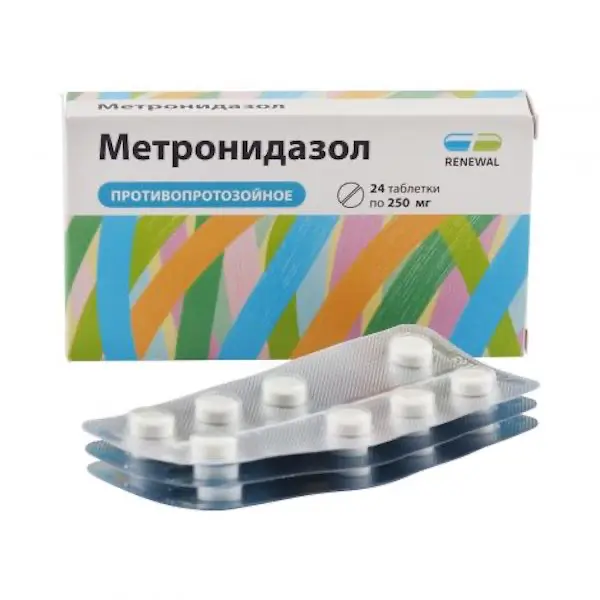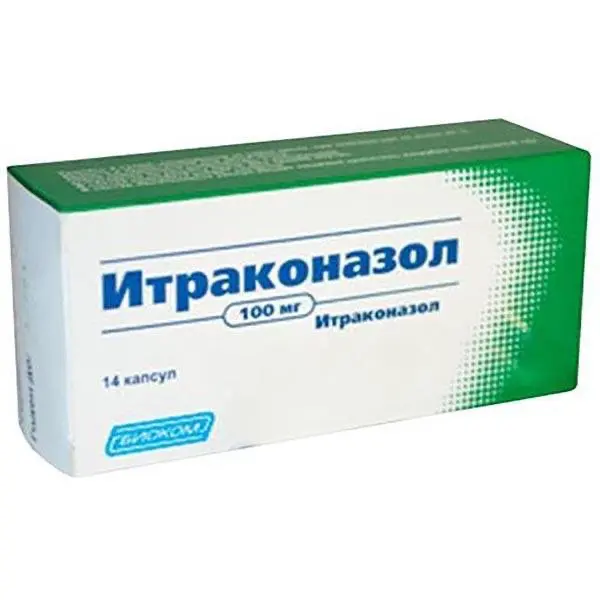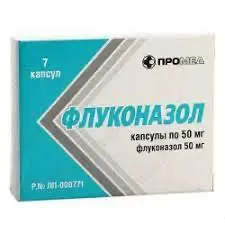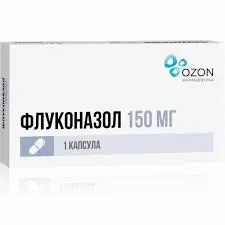Description
Voriconazole Pharmacodynamics
Voriconazole is a broad spectrum antifungal agent of the triazole group. Mechanism of action of voriconazole is related to the inhibition of demethylation of 14?-sterol, mediated through fungal cytochrome P450, which is a key step in the biosynthesis of ergosterol. The accumulation of 14?-methylsterol correlates with the subsequent loss of ergosterol in fungal cell membranes, which determines the antifungal activity of voriconazole. Voriconazole was found to be more selective against fungal cytochrome P450 isoenzymes than against various mammalian cytochrome P450 enzyme systems.
No positive correlation between the mean, maximum and minimum plasma concentrations of voriconazole and drug efficacy was found in therapeutic studies, and this relationship has not been studied in prophylactic studies.
Pharmacodynamic and pharmacokinetic analysis of clinical trial data revealed a positive relationship between voriconazole plasma concentration and abnormal biochemical parameters of liver function and visual disturbances.
In vitro voriconazole has a broad spectrum of antifungal action: it is active against Candida spp. (including fluconazole-resistant strains of C. krusei and resistant strains of C. glabrata and C. albicans), and shows fungicidal effect against all studied strains of Aspergillus spp, and pathogenic fungi of recent relevance, including Scedosporium spp. or Fusarium spp., which are of limited sensitivity to existing antifungal agents.
Clinical efficacy (with partial or complete response) of voriconazole has been demonstrated in infections caused by Aspergillus spp. including A. flavus, A. fumigatus, A. terreus, A. niger, A. nidulans, Candida spp. including C. albicans, C. glabrata, C. krusei, C. parapsilosis, C. tropicalis, and against a limited number of strains of C. dubliniensis, C. inconspicua, C. guilliermondii, Scedosporium spp. including S. apiospermum, S. prolificans and Fusarium spp.
Other fungal infections for which voriconazole was used (sometimes with partial or complete response) included isolated infections caused by Alternaria spp., Blastomyces dermatitidis, Blastoschizomyces capitatus, Cladosporium spp, Coccidioides immitis, Conidiobolus coronatus, Cryptococcus neoformans, Exserohilum rostratum, Exophiala spinifera, Fonsecaea pedrosoi, Madurella mycetomatis, Paecilomyces lilacinus, Penicillium spp, including P. marneffei, Phialophora richardsiae, Scopulariopsis brevicaulis, and Trichosporon spp. including T. beigelii.
In vitro activity of voriconazole was demonstrated against clinical strains of Acremonium spp., Alternaria spp., Bipolaris spp., Cladophialophora spp. and Histoplasma capsulatum. The growth of most strains was suppressed at the concentration of voriconazole from 0.05 µg/ml to 2 µg/ml.
In vitro activity of voriconazole against Curvularia spp. and Sporothrix spp. was also detected, but the clinical significance of this effect is unknown.
Indications
– Invasive aspergillosis.
– Candidaemia in patients without neutropenia.
– Severe invasive candidiasis infections (including C. krusei).
– Esophageal candidiasis.
– Severe fungal infections caused by Scedosporium spp. and Fusarium spp.
– Other severe invasive fungal infections if intolerant or refractory to other medications.
– Prevention of “breakthrough” fungal infections in patients with reduced immune system function, fever and neutropenia from the high risk group (hematopoietic stem cell transplant recipients, patients with relapsed leukemia).
– Prophylaxis of invasive fungal infections in high-risk patients (adults and children over 12 years), such as hematopoietic stem cell transplant recipients.
Contraindications
– Voriconazole Canon is contraindicated in patients with hypersensitivity to voriconazole or any other component of the drug.
– Concomitant use of Voriconazole Canon and the following drugs (see “Interaction with other drugs” on page 16). section “Interaction with other medicinal products”): CYP3A4 isoenzyme substrates – terfenadine, astemizole, cisapride, pimozide or quinidine; sirolimus; rifampicin, carbamazepine and long-acting barbiturates (phenobarbital), rifabutin; efavirenz in doses 400 mg or higher once daily (with voriconazole in standard doses); ritonavir in high doses (400 mg or more twice daily); ergot alkaloids (ergotamine, dihydroergotamine), which are substrates of CYP3A4 isoenzyme; St. John’s wort (inducer of cytochrome P450 and P-glycoprotein).
– The drug Voriconazole Canon is contraindicated in children under the age of 3 years (for this dosage form).
Caution:
Hypersensitivity to other drugs – azole derivatives.
Severe degree of hepatic function insufficiency, severe degree of renal function insufficiency.
Voriconazole Canon should be used with caution in patients with proarrhythmic conditions: congenital or acquired prolongation of QT interval, cardiomyopathy, especially with heart failure, sinus bradycardia, presence of symptomatic arrhythmia, concomitant use of drugs that cause prolongation of QT interval.
Also, caution should be exercised when using Voriconazole Canon in patients with electrolyte disturbances, such as: hypokalemia, hypomagnesemia and hypocalcemia.
Dosage and administration.
- Orally, 1 hour before a meal or 1 hour after a meal.
- Electrolyte disorders such as hypokalemia, hypomagnesemia and hypocalcemia should be corrected before the beginning of therapy (see also section “Side effects”).
- Adults and children from 12 years old: Administration of Voriconazole Canon should be started with the recommended saturation dose in order to achieve plasma concentrations close to the equilibrium one day.
- Patients with a body weight of 40 kg or more Patients with a body weight of less than 40 kg
- Loading dose – all indications (first 24 hours) 400 mg every 12 hours (in first 24 hours) 200 mg every 12 hours (in first 24 hours)
Maintenance dose – all indications (after the first 24 hours) 200 mg every 12 hours 100 mg every 12 hours
Dosage adjustment: in case of insufficient effectiveness of treatment, the maintenance dose of Voriconazole Canon can be increased up to 300 mg every 12 hours. In patients with body weight less than 40 kg, the dose may be increased to 150 mg every 12 hours. - If a patient cannot tolerate the drug in a high dose (300 mg every 12 hours), the maintenance dose is gradually reduced to 200 mg, 50 mg every 12 hours (for patients with body weight less than 40 kg – 100 mg every 12 hours).
- Phenytoin can be used concomitantly with Voriconazole Canon if the maintenance dose of the latter is increased from 200 mg to 400 mg every 12 hours (from 100 mg to 200 mg every 12 hours in patients with body weight less than 40 kg).
- In concomitant use of voriconazole and efavirenz (at a dose of 300 mg once daily), the maintenance dose of Voriconazole Canon should be increased to 400 mg every 12 hours.
Renal dysfunction: No dose adjustment of voriconazole in patients with mild to severe renal dysfunction is required. - Liver function disorders: in acute liver damage, manifested by increased alanine aminotransferase (ALT), aspartate aminotransferase (ACT) activity, dose adjustment is not required, but it is recommended to continue monitoring of liver function parameters. Patients with mild or moderate liver function abnormalities (classes A and B according to Child-Pugh classification) should take standard saturation dose of Voriconazole Canon, and the maintenance dose should be reduced by half. In patients with severe hepatic impairment, Voriconazole Canon should be administered only in cases when the expected benefit exceeds the possible risk, and under continuous monitoring to detect signs of toxic effects of the drug.
- Elderly patients: Dose adjustment in elderly patients is not required.
- Children: The drug in tablet form is administered in children if the child is able to swallow the tablets.
- Recommended dosage for children from 3 to 12 years: If the child can swallow the tablets, the dose is rounded to the nearest dose in mg/kg, multiple of 50 mg, and administered as whole tablets. Dosing regimen of voriconazole in children (ages 3 to 12 years) and adolescents ages 12 to 14 years and body weight less than 50 kg:
Saturating dose (first 24 h) Not recommended
Maintenance dose (after the first 24 hours) 9 mg/kg twice daily (maximum dose 350 mg twice daily)
The pharmacokinetics and tolerability of higher doses of voriconazole in children have not been studied. - Recommendations for the use of voriconazole in children are given on the basis of studies of its use in the form of powder for oral suspension. Bioequivalence of voriconazole in the form of powder for oral suspension and tablets for use in children has not been studied. Considering that in children the passage of food through the gastrointestinal tract is slow, it is likely that absorption of voriconazole when administered orally will be different than in adults. The use of voriconazole in children aged 3 to 12 years with liver or kidney dysfunction has not been studied.
- Dose adjustment: If the patient’s clinical response is inadequate, the dose may be increased in increments of 1 mg/kg (or 50 mg if the maximum dose of 350 mg was initially used).




